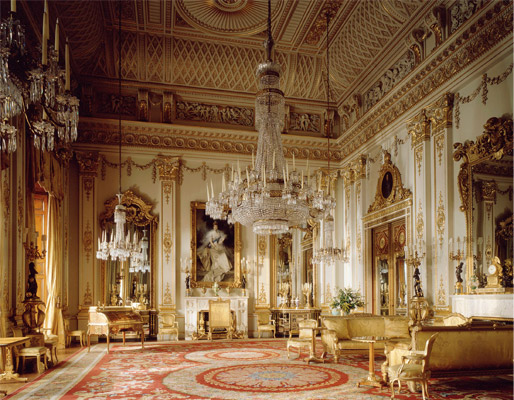 Situated at the heart of the City of Westminister, Buckingham Palace is presently the official residence of the British Royalty. The majestic palace has been used as a common location for many occasions of national rejoicing, gathering the British commoners together. It is more often known as a place of privy for royal hospitality and state assemblies.
Situated at the heart of the City of Westminister, Buckingham Palace is presently the official residence of the British Royalty. The majestic palace has been used as a common location for many occasions of national rejoicing, gathering the British commoners together. It is more often known as a place of privy for royal hospitality and state assemblies.
Tracing back to its origin, Buckingham Palace was built in 1705 for the Duke of Buckingham. At the time, it was a privately owned townhouse, which was referred to as Buckingham House. It was later acquired by King George III in 1761 as a gift for his wife, Queen Charlotte. It was subsequently known as the “Queens House”.
In the 19th century, under the ownership of King George IV who was the monarch at the time, the private residence underwent major renovations. It is said that the King’s intention was to build a small comfortable home. However, while the construction was in progress, the King decided to completely modify the palace with the help of an esteemed architect, John Nash. The construction of the remodeling enabled the building to expand to its palatial extravagance that is seen today. Completed by the renowned architect John Nash, Edward Blore also contributed at the latter part of the construction when there was a sudden dispute between John Nash and the King.
 The building was made to accommodate three grand wings around the central courtyard, forming the core artistic elements that render the Palace its most grandiose stature. The façade of the external area was designed according to the King’s preference of French Neoclassical influences. Most of the furnishings were brought from Carlton House, which was a lavish mansion and others were brought in from France, after the French revolutionary movement.
The building was made to accommodate three grand wings around the central courtyard, forming the core artistic elements that render the Palace its most grandiose stature. The façade of the external area was designed according to the King’s preference of French Neoclassical influences. Most of the furnishings were brought from Carlton House, which was a lavish mansion and others were brought in from France, after the French revolutionary movement.
Finally, in 1837, on the accession to the throne of Queen Victoria, Buckingham Palace was officially recognized as the royal residence of the British monarch. However, it is not merely the royal family that resides in the palace as there is a multitude of royal staff members who also occupy the area. One most significant indication whenever the Queen decides to stay at the palace is a flag that is hoisted up during the entire period of her stay.
Tours around the palace are available to the public at large, in occasions when the royals are not resident, especially during the months of summer. There are 600 rooms found in the palace that also encompass a spacious ballroom of 131 feet and a swimming pool. Sauntering around the luxuriant surrounding, one can vividly capture the immense opulence of  the palace. Most tours include the splendid Picture Gallery, the lavish Blue and Green Drawing Room, the spectacular Throne Room and the magnificent Silk Tapestry Rooms. Also included are the superbly decorated State Dining Room and the State Rooms that feature timeless masterpieces of pure artistry by Rubens, Rembrandt and Vermeer, the most exquisitely crafted furniture around the world, the finest sculptures and brilliant Sevres porcelain.
the palace. Most tours include the splendid Picture Gallery, the lavish Blue and Green Drawing Room, the spectacular Throne Room and the magnificent Silk Tapestry Rooms. Also included are the superbly decorated State Dining Room and the State Rooms that feature timeless masterpieces of pure artistry by Rubens, Rembrandt and Vermeer, the most exquisitely crafted furniture around the world, the finest sculptures and brilliant Sevres porcelain.
If you are searching for a London apartment hotel, one that would come to mind is St Marks. Staying in a central London apartment such as a serviced apartment at St Marks provides a spacious and modern lodging that is bound to shower you with more than a convenient accommodation but a leisure vacation with impeccable services and amenities.
